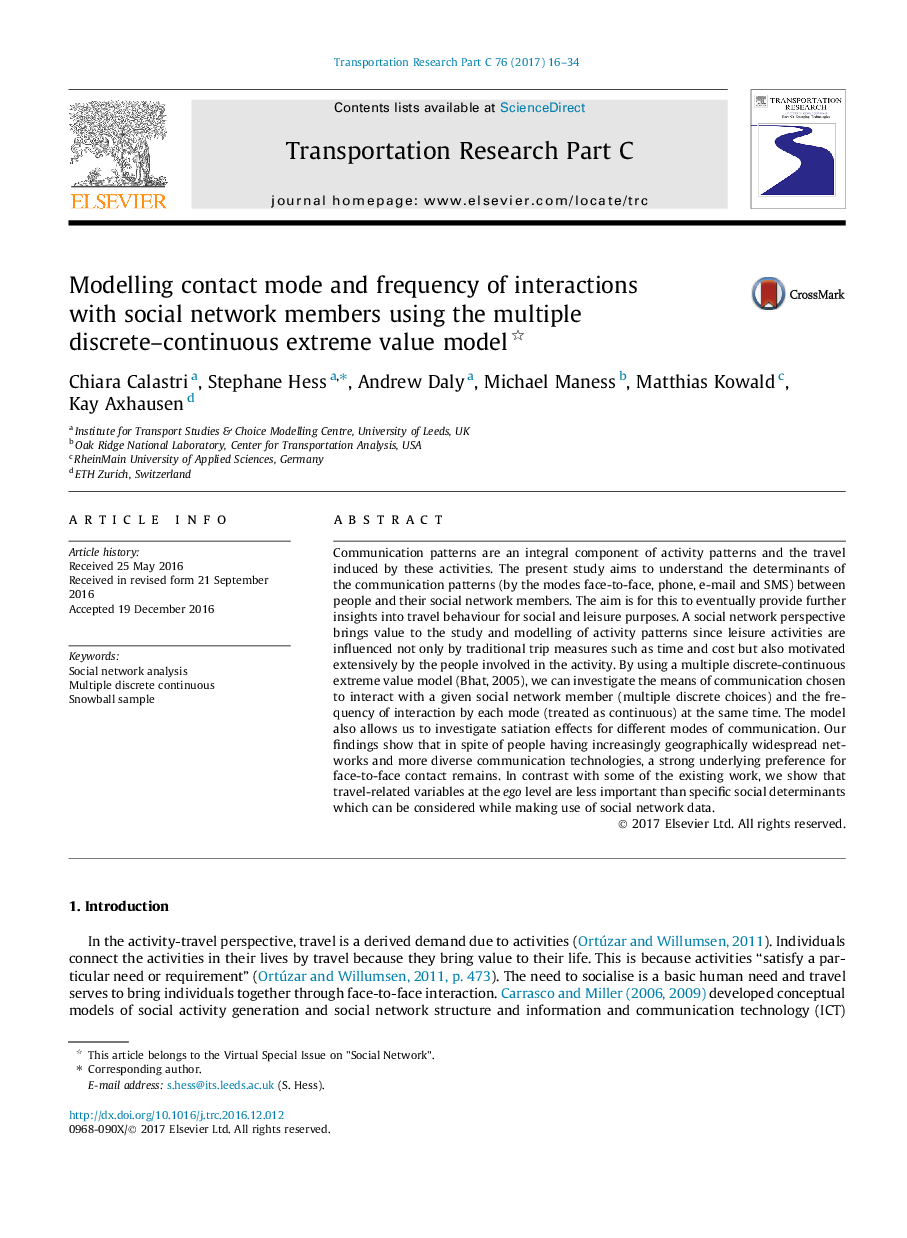| Article ID | Journal | Published Year | Pages | File Type |
|---|---|---|---|---|
| 4968517 | Transportation Research Part C: Emerging Technologies | 2017 | 19 Pages |
Abstract
Communication patterns are an integral component of activity patterns and the travel induced by these activities. The present study aims to understand the determinants of the communication patterns (by the modes face-to-face, phone, e-mail and SMS) between people and their social network members. The aim is for this to eventually provide further insights into travel behaviour for social and leisure purposes. A social network perspective brings value to the study and modelling of activity patterns since leisure activities are influenced not only by traditional trip measures such as time and cost but also motivated extensively by the people involved in the activity. By using a multiple discrete-continuous extreme value model (Bhat, 2005), we can investigate the means of communication chosen to interact with a given social network member (multiple discrete choices) and the frequency of interaction by each mode (treated as continuous) at the same time. The model also allows us to investigate satiation effects for different modes of communication. Our findings show that in spite of people having increasingly geographically widespread networks and more diverse communication technologies, a strong underlying preference for face-to-face contact remains. In contrast with some of the existing work, we show that travel-related variables at the ego level are less important than specific social determinants which can be considered while making use of social network data.
Keywords
Related Topics
Physical Sciences and Engineering
Computer Science
Computer Science Applications
Authors
Chiara Calastri, Stephane Hess, Andrew Daly, Michael Maness, Matthias Kowald, Kay Axhausen,
